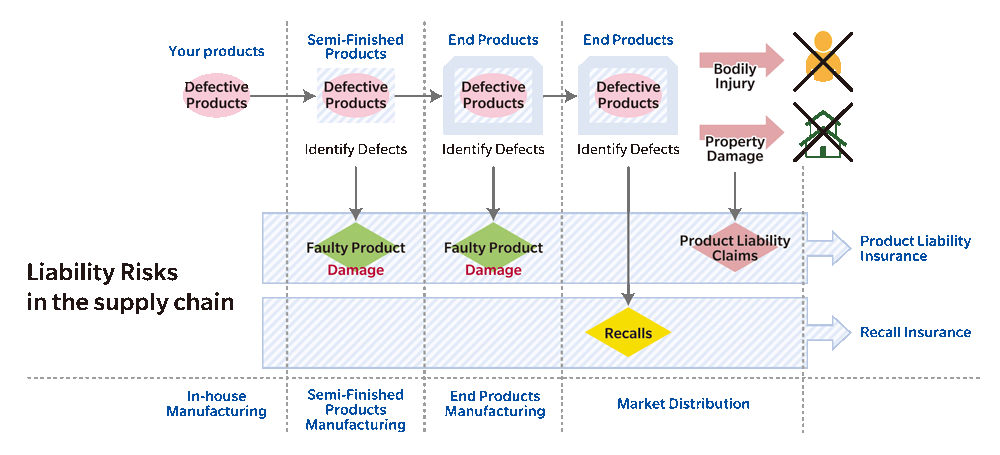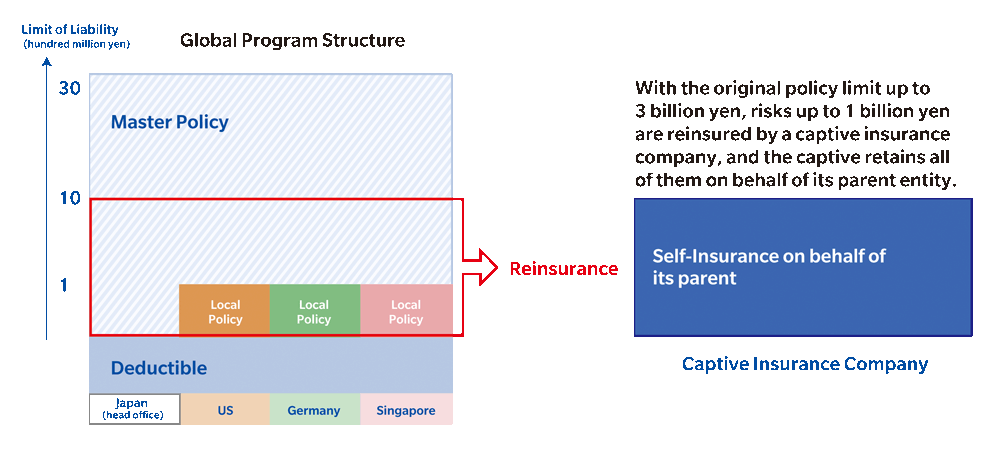You are leaving Marsh Broker Japan's website. Marsh Broker Japan has provided this link for your convenience, but assumes no responsibility for the content, links, privacy policy or security policy of the website.
Do you wish to leave our website?
Key Points for Arranging Recall Insurance for Automotive Parts and Materials Suppliers
The enactment of laws intended to promote consumer protection has advanced globally in recent years, and awareness of product and food safety is rising year-by-year. In addition, the frequency of recalls is increasing as a result of reinforced protection of corporate brand image.
In the automobile industry, which is experiencing technological innovation, computerization, and automation, the increased use of shared modules as automotive components is expanding the scope of models and makers affected when recalls are conducted. This means that when a problem occurs with in-house manufactured products, the risk of a massive recall can have ripple effects on suppliers. For Japanese manufacturing industries, which are expected to supply growing numbers of products, components, and materials to the automobile industry, preparing for such recall risks has become a major issue involving the lifelines of corporate activities. Use of recall insurance can minimize risks, and with insurance, if a recall does occur, you can get an early start on restoring business and recovering trust.
1. Liability Insurance Program Provides Comprehensive Coverage of Liability Risks Arising from Defects and Abnormalities in Supplied Products
The liability risks arising from defects and abnormalities in supplied products are not limited to recalls. We recommend the design of an insurance program that will provide comprehensive coverage of the following risks tailored to individual needs.
Should a single insurance policy be obtained to cover recall risks?
Product liability risks
Liability to pay compensation for personal injury or property damage incurred by third parties as a result of defects or abnormalities in supplied products
[ Key Point 1 ]
It is possible to reasonably reduce insurance premiums relating to liability risks arising from defects and faulty in supplied products by adopting shared payment limits under a single insurance program compared to individual insurance arrangements.
Faulty end Products and Pure Economic Loss (E&O) Risks
Liability to pay compensation for economic losses (losses from business suspension, unavoidable excess personnel expenses, and so on) incurred by third party buyers and others resulting from defects and faulty in supplied products.
[ Key Point 2 ]
Even if shared payment limits are adopted, it is possible to set limits for each risk type. With regard to recalls, cost-effectiveness increases by setting deductible amounts (self-insurance amounts) higher according to financial capacity.
Recall Risks
Liability to pay compensation for economic losses caused to a car manufacturer in the case where the car manufacturer implements a recall due to defects or faulty in supplied components
- Safety-related problems (recall and improvement measures)
- •Marketability and quality improvement measures (service campaigns, etc.)
[ Key Point 3 ]
It is necessary to confirm whether service campaigns and the like implemented as marketability and quality improvement measures are covered by recall insurance benefits (generally, only recalls implemented in the case where there is a safety-related problem are covered).

2. Recall Insurance Marketing Strategy
Insurance companies also have their risk preferences, and there are insurers that actively underwrite recalls and others that do not. Marketing to insurers that have strengths regarding recall risks is necessary to obtain favorable terms.
What type of insurance should be purchased from what type of insurance company?
[ Key Point 1 ]
Group product liability insurance for car manufacturer suppliers is not able to accommodate individual needs in many cases such as when the products subject to compensation or the covered region is limited. In addition, although there are economies of scale with regard to insurance premiums, even if there are no incidents involving your company, insurance premiums can rise if the overall circumstances regarding incidents worsen.
[ Key Point 2 ]
Japanese insurance companies underwrite recall insurance, but European insurers have more actively underwritten recall insurance in the past and are highly competitive.
[ Key Point 3 ]
In cases where it is necessary to set a high payment limit above a certain level (generally ¥3 billion or higher), it is possible to control total insurance premium costs by conducting marketing and procuring insurance with international insurance markets such as London and Singapore included.
Main Insurance Companies that Underwrite Recall Insurance
< Japanese Insurance Market >Japanese insurers and foreign insurers
- Sompo Japan Nipponkoa Insurance Inc.
- Mitsui Sumitomo Insurance Co., Ltd.
- Tokio Marine & Nichido Fire Insurance Co., Ltd.
- Allianz Fire and Marine Insurance Japan Ltd.
- HDI Global SE
- Zurich Insurance Company Ltd
- Swiss Re International SE.
<International Insurance Market>Singapore + LondonXL Catlin
- QBE Insurance Group Limited
- Limit
- Tokio Marine kiln Group Limited
- Hiscox London Market
- MS Amlin
- Allied World
- Arch
- Argo Group
- Talbot Syndicate 1183
3. Medium- To Long-Term Strategies for Recall Insurance
It is necessary for global enterprises to centrally manage recall risks on a global basis. A global insurance program is an effective means of achieving this.
What are the issues after arranging for recall insurance?
[ Key Point 1 ]
After Marsh arranges comprehensive recall insurance, it is necessary to convert the recall insurance into a global program in order to conduct risk hedging of recall risks using insurance to eliminate omissions throughout the entire consolidated group.
[ Key Point 2 ]
A global insurance program (GP) is a means of centrally arranging for insurance policies that will comprehensively cover risks throughout the world with the parent company acting as the representative policyholder for group companies. Introducing a GP provides benefits such as higher purchasing power, reducing insurance premiums through economies of scale, optimizing compensation coverage, and centrally managing risks.
[ Key Point 3 ]
A GP is created by combining a master policy entered into by the parent company in Japan with local policies entered into by overseas subsidiaries, and as a result, it is necessary to employ an insurer and an insurance broker that have overseas networks.
[ Key Point 4 ]
In addition, there is margin to consider using a captive insurance company* and actively employing self-insurance.
* A captive insurance company is an insurance company that established by a company or corporate group that does not engage in the insurance business in order to underwrite risks for that company or corporate group only. For further details, please refer to the Marsh website.

